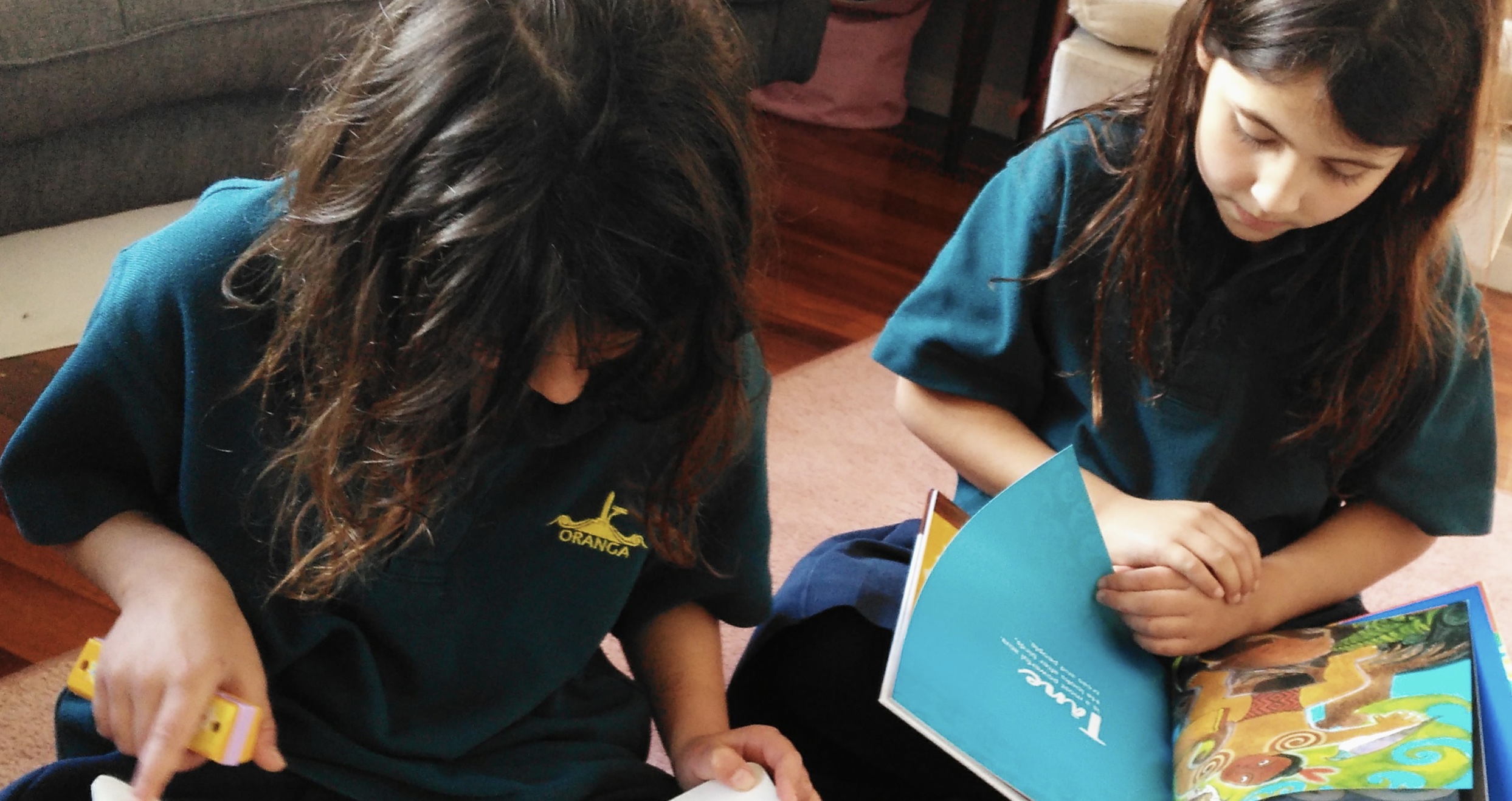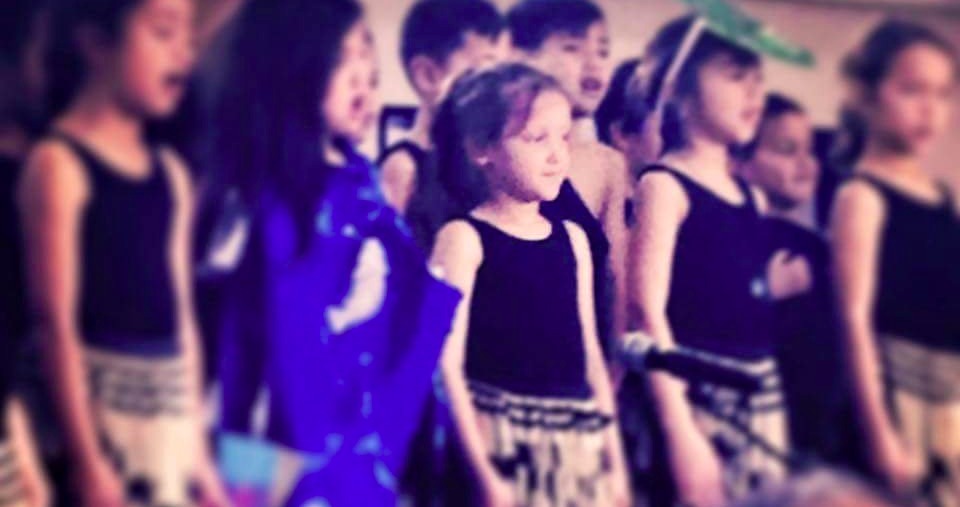We are delighted to have Nadine Millar (Ngāti Hine, Ngāpuhi) as our guest editor for Te Wiki o te Reo Māori. Today, she has a handy list of things you can do right now to support your tamariki learning Māori – at school, and at home, whatever your whānau’s cultural background, and regardless your level of reo.

The debate about whether te reo Māori should be compulsory in schools is a massive distraction.
What many people don’t realise is that schools already have a responsibility, under the Education Act, to provide instruction in te reo to every parent who asks for it.
The key point? You have to ask for it.
Tuatahi: Find out what your school’s charter says in relation to the teaching and learning of te reo and tikanga Māori
This is often just a case of looking at your school’s website and downloading a copy of the charter.
By law, every school must detail exactly how they will reflect New Zealand’s cultural diversity, including providing instruction in te reo and tikanga Māori. You’ll most likely find statements that sound good on paper, but you may not always see reflected in the classroom. Challenge that.
If your child isn’t having any formal lessons in te reo, ask for it. Don’t be afraid to be a hōhā. The levers of change are much closer than you think.
Don’t be afraid to be a hōhā. The levers of change are much closer than you think.
Tuarua: Check your expectations at the gate; schools can only do so much
Notwithstanding point one, there are only six hours in the school day. Teachers aren’t miracle workers. Even if every school had the best reo teachers on tap, a child would never have all their language needs met in one place.
Nurturing a love of te reo begins first and foremost at home. You don’t need to wait for the state to intervene for that. For some whānau, embracing te reo at home might just mean learning and modelling correct pronunciation. For others, it means walking the talk – using all the reo you have, If you want teachers to embrace te reo at school, you need to practise what you preach and use it at home.
Tuatoru: Know where to find reo-sources
There’s a wealth of resources available to support the teaching of te reo in schools. The Ministry of Education’s website is a bit of a relic as far as websites go, but that’s due in part to the sheer volume of content buried within its URLs. There’s everything from videos to professional development opportunities to lesson plans aligned specifically to the curriculum. Plus, schools have access to a wide range of resources in te reo through the Ministry’s catalogue Down the Back of the Chair.
It will only take you five minutes to send either one of these links to your classroom teacher. Chances are they already know about it, but they may not be using them and could benefit from a little push.
Tuawhā: Understand that Māori is so much more than just language
High quality teaching of te reo is a must, but Māori language doesn’t exist in a vacuum. Māori language goes hand in hand with Māori knowledge, customs and values. Māori shouldn’t be viewed solely as an elective subject, taught only in the margins of school curriculum like French or Drama. Te reo is our official language, equal to English, and should be incorporated in every classroom and every subject.
This means that in English classes, you should expect your kids to be reading books by Māori authors as well as Pākehā authors. When studying science or health or history, students should be encouraged to consider what a Māori perspective might look like.
Tuarima: Look at your Board of Trustees
One of the most effective ways to influence the culture of your school is through the Board of Trustees. The problem is, when it comes to driving things Māori, more often than not there aren’t enough Māori parents at the table.
A lack of representation on Boards of Trustees speaks to structural barriers within the system, rather than a lack of interest by Māori parents. This is an issue that many schools around the country struggle with.
Have a look at the make-up of your Board of Trustees. If Māori parents aren’t at the table, you need to ask why. Your Board might need to be pro-active to increase the number of Māori who are actively involved. Not just getting people along to meetings, but changing the culture of those meetings so that Māori feel more inclined to participate. But remember, one Māori parent does not a roopū make. No-one ever likes being the only Māori in the room.
Tuaono: Focus on partnership
There’s a saying in Pākehā that goes ‘many hands make light work.’ There’s a similar whakataukī in Māori: ‘Mā whero mā pango ka oti ai te mahi.’ With red and with black, the job will be done. In other words, do your bit. We’re a bicultural country and the true expression of that relationship is partnership.
‘Mā whero mā pango ka oti ai te mahi.’ With red and with black, the job will be done.
If you’re lucky enough to have active Māori whānau within your school community, or if you have an awesome Māori teacher who is happy to lead, that’s great. But don’t expect a few people to carry all the responsibility on their own. Too often Māori parents and teachers are overburdened, while Pākehā, often for genuine reasons, hold back: No-one wants to make a mistake, or overstep boundaries. That’s not a bad thing, but if in doubt, ask. Be aware that sometimes the answers will differ depending on who you speak to, because tikanga and kawa can vary.
Likewise, when reaching out to your local iwi, whether it to be for help teaching local history, finding a kapa haka tutor, or learning waiata, remember the value of reciprocity. Don’t just call up out of the blue when you need somewhere to go for a noho marae. Think about how you can build genuine, long-lasting relationships with the people who share the land with you.
Tuawhitu: Learn te reo through osmosis with kapa haka
The benefits of kapa haka are so wide-ranging it would need an entire article on its own and we’d still only scratch the surface. It’s one of the best, most authentic and inclusive ways in which to engage young people in te ao Māori.
Kapa haka is so much more than performance art. It’s a vehicle for language, history, whakapapa, mātauranga and tikanga Māori. Kapa haka celebrates Māori stories, and gives students a platform to express pride in who they are and where they come from, among many other benefits. Suffice to say, if there’s one sure-fire thing you can do to support your kid to learn te reo in school, it’s to encourage them to join kapa haka.

There’s one important caveat here: The key to any successful kapa haka is parental support and involvement. Schools can’t do it all on their own. You need to contribute, whether it’s fundraising, playing the gat or making the poi. This is just part of the territory. Kapa haka is whakawhanaungatanga in action.
…if there’s one sure-fire thing you can do to support your kid to learn te reo in school, it’s to encourage them to join kapa haka.
Tuawaru: Learn Māori
Yes, you too! We can’t expect our kids to save the language if we, as adults and role models, don’t value and nurture it too.
There is a range of free and low cost options available to learn Māori, from awesome do-it-yourself books like Māori Made Easy by Scotty Morrison, to evening or weekend wānanga through Te Wānanga o Aotearoa. If you want something for the whole whānau, check out Te Ataarangi. This is the original grassroots movement from which Te Kōhanga Reo was born.
Wherever you go, don’t give up if one approach or one teacher doesn’t gel with you. Set achievable goals, and remember that learning te reo is a journey, not a destination.
Tuaiwa: Don’t let the government off the hook
At the moment, the way our system works, schools have the freedom to spend their operational budgets as they wish. For the most part, this is a good system, because it allows schools to be flexible and responsive to their unique communities. But it’s also a bit of a gamble.
Leaving it up to schools to decide how much money to spend on te reo, especially in scarce times, means it’s quite feasible for schools only to fund it minimally. It’s all very well for the Ministry to say that schools have a responsibility to teach te reo and tikanga Māori, but if schools aren’t held accountable for doing so, where is the incentive? We need much better transparency around the investment schools make in te reo in English medium schools, and only the government can make that happen.
Te tekau: Use te reo every day, not just during Māori Language Week
Te wiki o te reo is an important week in the calendar. It’s an opportunity to celebrate our native tongue, to acknowledge how far we’ve come, and to set a course for the future. But it’s not the only week of the year to use te reo.
Yes, te reo is a taonga. But it’s not the same as Nana’s precious china, stored in a glass cabinet only to be rolled out on special occasions.
Te reo is a living language, and we should be speaking, loving and celebrating it, every day of the year.
This is the third in our series of features in celebration of Te Wiki o te Reo Māori. Check out the first two:
Kristin Smith writes a love letter to the sci-fi novel Te Ātea.
Nadine Anne Hura
Nadine Anne Hura (Ngāti Hine, Ngāpuhi) has a background in journalism, education policy and kaupapa Māori research. Her essays explore themes of identity, biculturalism, politics and parenting, and are collected on her website.



